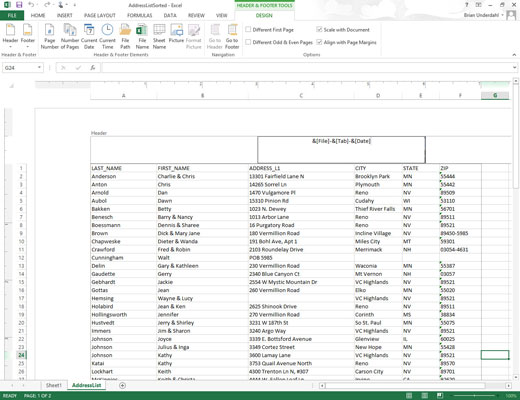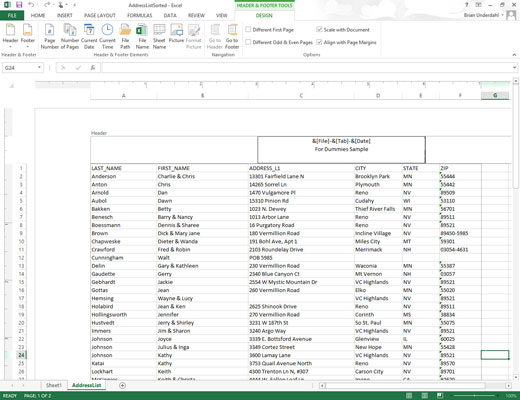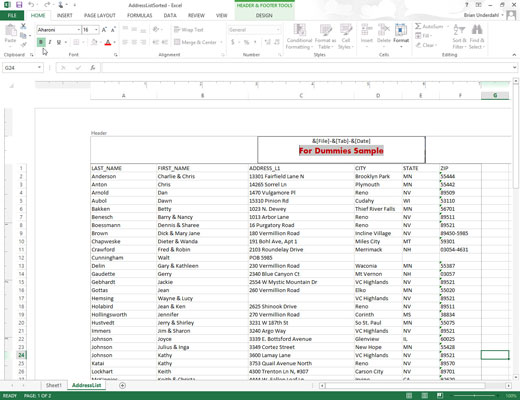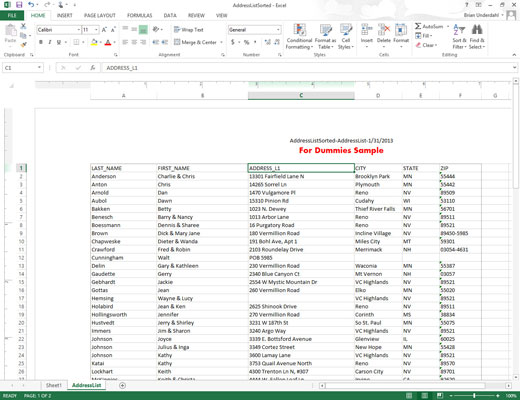Although Excel 2013 offers several stock headers and footers, you may want to insert information not available or in an arrangement that Excel doesn’t offer in the ready-made headers and footers.
For those times, you need to use the command buttons that appear in the Header & Footer Elements group of the Design tab on the Header & Footer Tools contextual tab. These command buttons enable you to blend your own information with that generated by Excel into different sections of the custom header or footer you’re creating.
To use these command buttons in the Header & Footer Elements group to create a custom header or footer, follow these steps:
Put your worksheet into Page Layout view by clicking the Page Layout View button on the status bar, or by choosing View→Page Layout View on the Ribbon, or by pressing Alt+WP.

In Page Layout view, the text Click to Add Header appears centered in the top margin of the first page, and the text Click to Add Footer appears centered in the bottom margin.
Position the mouse or Touch pointer in the top margin to create a custom header or in the bottom margin to create a custom footer, and then click the pointer in the left, center, or right section of the header or footer to set the insertion point and left-align, center, or right-align the text.

When Excel sets the insertion point, the text, Click to Add Header and Click to Add Footer, disappears, and the Design tab on the Header & Footer Tools contextual tab becomes active on the Ribbon.
To add program-generated information to your custom header or footer such as the filename, worksheet name, current date, and so forth, click its command button in the Header & Footer Elements group.

Excel inserts the appropriate header/footer code preceded by an ampersand (&) in the header or footer. These codes are replaced by the actual information (filename, worksheet name, graphic image, and the like) as soon as you click another section of the header or footer or finish the header or footer by clicking the mouse pointer outside of it.
(Optional) To add your own text to the custom header or footer, type it at the insertion point.

When joining program-generated information indicated by a header/footer code with your own text, be sure to insert the appropriate spaces and punctuation.
(Optional) To modify the font, font size, or some other font attribute of your custom header or footer, drag through its codes and text, click the Home tab, and then click the appropriate command button in the Font group on the Home tab.

In addition to selecting a new font and font size for the custom header or footer, you can add bold, italics, underlining, and a new font color to its text with the Bold, Italic, Underline, and Font Color command buttons on the Home tab.
After you finish defining and formatting the codes and text in your custom header or footer, click a cell in the Worksheet area to deselect the header or footer area.

Excel replaces the header/footer codes in the custom header or footer with the actual information, while at the same time removing the Header & Footer Tools contextual tab from the Ribbon.






